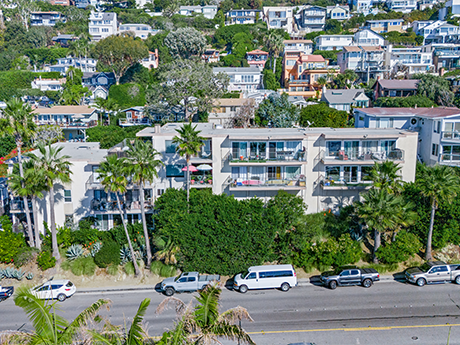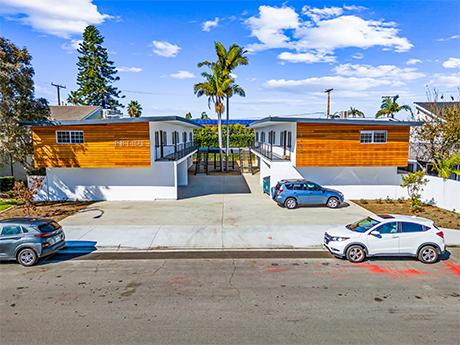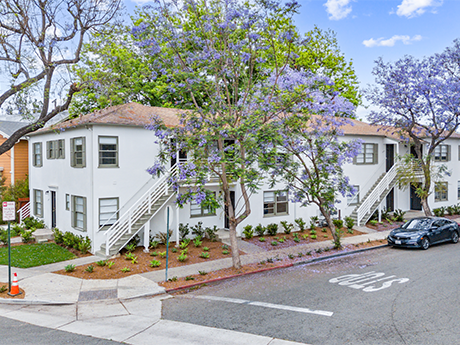The multifamily real estate market in Southern California, particularly in Orange County, is poised for significant shifts in 2025. The region has rebounded from the volatility of the COVID-19 pandemic but is still navigating regulatory pressures.
In positive news, the rejection of Proposition 33 has averted the expansion of statewide rent control, offering a more favorable environment for investors. Amid elevated interest rates and a changing political landscape, the market presents both challenges and opportunities for buyers, sellers and investors alike.
If passed, Proposition 33 would have allowed cities and counties to impose rent caps on nearly all types of housing, including single-family homes and newly constructed apartments, according to the California Apartment Association. It would also have reinstated vacancy controls, keeping rent restrictions in place even during tenant turnover.
All Eyes on 10-Year Treasury Yield
As we begin 2025, the multifamily market in Southern California faces one of its most challenging environments in recent years. Current interest rates, which remain elevated, are creating significant headwinds for investors.
The Federal Reserve’s decision to keep rates at an elevated level has been driven by ongoing inflationary concerns and policy uncertainties. This has made it more expensive for investors to finance acquisitions, leading to reduced cash flows and lower returns than many had hoped for.
All eyes are on the 10-year U.S. Treasury yield, an important benchmark for long-term interest rates. Given the volatility on the long end of the yield curve in recent months, many are speculating when yields will fall, which would lower borrowing costs and provide relief for investors. The 10-year Treasury yield was 4.3 percent as of Feb. 25.
However, we expect the yield on the 10-year Treasury will remain somewhat elevated — above 4 percent — through the rest of 2025. Some analysts predict that rates may not drop significantly until late 2025 or even into 2026, depending on how economic conditions evolve. Still, we anticipate that investment activity will continue to improve, particularly in the second half of 2025.
Who’s Likely to Be Selling and Why?
In this challenging environment, certain groups are more likely to be selling their multifamily properties in Orange County and Southern California at large. These include:
Sellers facing financing adjustments: Many property owners who acquired assets during the low-interest-rate environment of the past decade may be looking to exit the market because of their inability to refinance at attractive rates. As interest rates remain relatively high, cash-flow pressures have increased for owners with variable-rate debt or loans that are nearing maturity. Many investors took out loans with an interest-only component, and these loans are now adjusting to include principal payments, resulting in borrowers experiencing payment shock as their cash flow decreases.
Legacy owners cashing out: Some longtime property owners who have benefitted from significant appreciation over the years may decide that now is a good time to cash out. To some, the multifamily business has become burdensome, while others have watched as their investment partners or family members decided to part ways. These types of sellers may prefer to liquidate their holdings while property values remain relatively strong.
Private investors: Private investors are also likely to sell, particularly if they cannot achieve the returns they anticipated. The complexities of property management, ever-changing tenant laws and rising operating costs may motivate these owners to exit the market. Current market conditions present an opportunity for these investors, especially if they can find a buyer willing to purchase the property at a favorable price.

Value-Add Assets in Demand
Despite the headwinds of elevated interest rates and economic uncertainty, the Orange County multifamily market still offers valuable opportunities for investors, particularly in the realm of value-add properties. These investment opportunities are attractive for several reasons.
Rent growth potential: Orange County has been one of the strongest rental markets in Southern California for years, driven by its desirable location, robust job market and proximity to major urban centers like Los Angeles and San Diego.
According to a report published by CBRE, the Orange County multifamily market closed the fourth quarter of 2024 with an impressive occupancy rate of 96.5 percent, marking a 0.3 percent increase from the previous quarter.
Effective rents in the county averaged $2,853 as of the fourth quarter, down slightly from the previous quarter.
For comparison, Moody’s reported that the average effective rent nationally for the same quarter was $1,850, just below the all-time high of $1,851, recorded in the third quarter of 2023.
Many properties in the region offer significant upside potential through targeted improvements and repositioning, enabling investors to capture higher rents as demand for quality housing continues to rise.
Renovations will increase yields: A significant portion of Orange County’s multifamily housing stock was constructed in the 1950s through the 1970s, creating opportunities for investors to renovate units and enhance common areas.
These upgrades can drive rent growth and overall returns. Properties in cities such as Anaheim, Fullerton, Orange, Garden Grove and Costa Mesa, which have focused on revitalization efforts in recent years, present ideal value-add opportunities for the right buyer.
Rent Control Issues Persist
Because Proposition 33 was voted down in November 2024, landlords have greater flexibility to align their rents with market rates, enhancing income potential.
However, local markets like Santa Ana continue to enforce their own rent control measures, illustrating the importance of understanding market-specific regulations. Property owners seeking to boost income through renovations and effective management practices will benefit the most.
Strong Tenant Demand Continues
Despite the challenges facing the broader economy, solid tenant demand persists in Orange County’s rental market. This demand is fueled by a diverse population, a strong local economy and desirable lifestyle attributes.
The recent Los Angeles area fires have displaced residents and destroyed structures, significantly impacting the local housing market.
Displaced residents are seeking to remain close to their neighborhoods, but as rental inventory dwindles, they will start looking outside the Los Angeles area. Consequently, rental homes in Coastal Orange County are likely to be more affected than multifamily units in the region.
This consistent demand reduces the risk typically associated with value-add investments and provides investors with confidence that well-executed improvements will lead to sustained rental growth and strong occupancy levels.
Opportunities in 1031 Exchanges
One of the most significant shifts in the Southern California multifamily market in 2025 is the decrease in the competitive bidding pool that characterized the COVID-era real estate boom.
During the pandemic, low interest rates, a flight to safety and a surge of capital into real estate drove up property prices and led to bidding wars in nearly every commercial real estate segment, including multifamily assets.
Today, with elevated interest rates and more conservative lending practices, some markets are less competitive, which could benefit buyers. Many investors who were previously priced out of offerings due to strong competition now have a higher likelihood of structuring 1031 exchanges with greater ease. This creates an opportunity for investors to reposition their portfolios, whether they are relocating capital from other markets or upgrading their holdings within Southern California.

Notable Transactions, Market Movements
The Orange County multifamily market has seen some notable transactions that have positively influenced the broader market sentiment. Recently, several property sales were completed in key markets such as coastal Orange County, signaling the ongoing investor appetite for this area.
For example, CBRE’s team facilitated the sale of Beachwood Apartments, an 18-unit multifamily community in Huntington Beach, California, to a private investor. The sales price of $8.65 million represents $480,556 per unit and $547 per square foot.
The CBRE team generated nine competitive offers. Investors were attracted to this generational buying opportunity due to its exceptional coastal location in the 100 block of downtown Huntington Beach and the property’s upside potential.
In Costa Mesa, our team completed the sale of a newly renovated 12-unit property for $479,000 per unit and $753 per foot.
These transactions highlight a flight to turnkey properties in great rental markets, illustrating the increasing demand for well-located multifamily assets and the continued appeal of properties with attractive rent-growth potential.
Additionally, the sale of a mid-sized multifamily portfolio in Costa Mesa demonstrates a rising trend of seasoned investors restructuring their holdings. The buyer, a private equity firm specializing in California real estate, cited the combination of strategic locations, strong rent-growth potential and opportunities for operational efficiencies as key factors driving the acquisition.
Market in Transition
The Southern California multifamily market, and specifically Orange County, is in a period of transition as we head into 2025. Elevated interest rates present challenges for many investors, but the market remains appealing for those who can navigate these headwinds.
While current interest rates remain a challenge, there are positive factors in play, including the successful prevention of expanded statewide rent control.
Additionally, while competition may be less fierce than in the past few years, the potential for strong returns remains for those who are patient, strategic and able to weather the current economic uncertainties.
As 2025 progresses, all eyes will be on how interest rates evolve and whether the broader market begins to stabilize, providing clearer signals for the next phase of growth in Southern California’s multifamily sector.
— Dan Blackwell is executive vice president at CBRE. Blackwell has specialized in multifamily investment sales since 2008 and leads the multifamily investment sales division for CBRE in Orange County. He and his team have completed over $1.5 billion in sales. This article originally appeared in the January/February issues of Western Multifamily & Affordable Housing Business.


